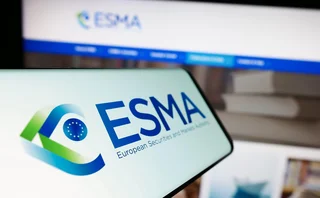
Sponsor's article > Mizuho Case Study: Implementing an Integrated, Scalable Risk Management Solution
Risk management never stands still for long. Financial markets are forever evolving, products are gaining complexity, and the sheer number of trades is growing rapidly. Risk management solutions and practices designed for the markets of the past can lack the flexibility, scalability and sheer computational power needed in today's more sophisticated trading environment.
This was the conclusion Mizuho International reached in 1999, when it realized its existing in-house market risk management solution would soon be unable to cope with the scale of change faced by the financial markets. To meet its increasingly complex business needs, and help it stay ahead of the competition, Mizuho International chose Algorithmics' Algo Risk as its market and credit risk solution of choice.
Today, Mizuho International has not only achieved its original objective-to implement an integrated, robust, scalable, 'best-of-breed' risk management solution-but it has also laid a solid platform for truly "best-practice" enterprise risk management, across both market and credit risk, meeting both its own needs and that of its head office, Mizuho Securities in Tokyo. Mizuho International is using Algo Risk to help it make significant strides towards merging the reporting functions of the finance and the risk management divisions, through the development of integrated management and P&L reports; Algo Risk is also a key part of Mizuho International's plans for its regulatory reporting environment.
Mizuho Securities itself uses Algo Risk and has gained regulatory approval for its internal models already, the first securities company in Japan to achieve this.
Mizuho International is the UK division of Mizuho Securities, the securities and investment-banking arm of the Mizuho Financial Group. By some measures, the group is the world's largest financial institution, with almost 700 retail banking branches across Japan, offices in all of the major markets in Europe, Asia and the Americas, over 30,000 employees worldwide and assets totaling a staggering ¥138 trillion ($1.3 trillion). Mizuho International's assets total around $30 billion, with a staff of 320 in London. Its parent, Tokyo-based Mizuho Securities, has 1,500 employees and assets of $60 billion.
Mizuho International prides itself on being able to move into new markets and new financial instruments quickly and efficiently. In the late 1990's, Mizuho realized that if it were to continue to stay ahead of the competition, its risk management systems would need to change.
In 1999, Mizuho International began looking for a new solution to replace the in-house market risk management system that it had developed during the previous three years. As financial instruments became more complex, the London team realized that the current system was reaching the limits of its capability and that a new solution, capable of implementing non-linear risk and several new risk factors, was needed.
"It would have been very expensive and time-consuming [to achieve the things we wanted to] within the framework of the system we had before. We felt that by purchasing an off-the-shelf solution we would achieve our goals more quickly," says Dr. Darren Sherman, Mizuho International's Head of
Risk Management and Controlling.
After rigorous and diligent analysis, in April of 2001 Mizuho International chose Toronto-based risk management software specialist Algorithmics as its risk vendor of choice. The bank required a robust, reliable, transparent system that offered sophisticated VaR analytics and provided clear, well-documented results. Algorithmics' market risk solution, Algo Risk, was able to deliver.
However it was Algorithmics' advanced analytics and unrivaled functionality that was ultimately the deciding factor. Algorithmics' Algo Risk solution offered exceptionally wide instrument coverage across all asset classes and product types. In addition, Mizuho International found that the Algorithmics technology architecture could provide a path toward more timely intra-day risk analysis in the future.
Concurrently, Tokyo-based Mizuho Securities, the parent company, was also looking for a more robust and flexible market risk solution. In April 2001, the two teams signed a global license with Algorithmics covering both London and Tokyo.
The next step was to carry out a global 'functional discovery' process with Algorithmics, which would undertake a detailed exploration of Mizuho's business requirements including the financial instruments, risk factors, market data, reporting needs and data flows that the new solution would need to incorporate. The London and Tokyo offices each carried out a full technical review specific to their local architecture, and then the two centres combined for a review of the functionality that would ultimately provide the specifications for the project.
Mizuho International ultimately opted to implement version 4.0 of Algo Risk due to its superior product coverage and data management functionality. Mizuho became the first bank to use what was then, the latest version of the solution. "We loved the Mark-to-Future cubes and, as risk managers, it was intuitive to us that this was the way to go. And we liked the front-end architecture of version 4.0, that is, with the processing and the delivery of data into [the simulation engine]," says Sherman.
At the time, the bank chose to build its own cubes and developed in-house tools to validate and report the data once the simulation engine had performed its calculations. A six-month design and analysis programme began in the third quarter of 2001, followed by an intensive six-month period to build, roll out and test the new software.
The system went live in October 2002. Mizuho was particularly pleased with the speed it was able to implement a brand new market risk solution with such a broad scope. "We had a very good project team, and a couple of members already had experience putting an Algorithmics solution in place at their previous banks, so we were able to pull out all the stops to meet our deadline," says Jeff Simmons, in charge of risk and product control.
Since the system went live in 2002, Mizuho International has continued to develop and enhance its risk capabilities. It has extended the system's reporting framework and expanded its analysis structure to provide more information about the risk and reward characteristics of portfolios, specifically in terms of the portfolio's relationship to the London trading environment. Initially, the risk management focus was largely centered on VaR figures and portfolio specifications required by the bank's Tokyo-based parent.
In 2004, the bank extended the market risk components of Algo Risk to support aspects of credit risk management, by integrating issuer risk reporting into the Algorithmics solution. Mizuho International is one of the few financial institutions to have amalgamated its credit risk and market risk departments, doing so as long ago as 1997. The majority of banks, on the other hand, still have separate market risk and credit risk functions, each making its own decisions, which will not always correspond.
Using a single solution for market and credit risk can eliminate not just inconsistencies, but also costs resulting from multiple systems and competing standards. "The fact that we had brought these two areas together certainly helped to make Algorithmics an attractive option for us; we could see the advantages of the system from both sides," says Sherman.
In addition, Mizuho International recently merged its financial management department-covering management information reporting and P&L reporting-with the risk department. "With this merger, we can make more use of Algo Suite to analyze P&L, which the finance department might not have done on its own," says Sherman.
Today, Algorithmics' suite of solutions is widely used within Mizuho, both on the securities and investment banking side, in both London and Tokyo, and at the group level. In the near future, Mizuho International is planning to implement additional elements of Algo Risk's functionality, to bring all its analysis and reporting into a consistent framework, and to enhance the bank's reporting capabilities.
Currently, Mizuho International runs its risk management framework on a batch basis, operating overnight and delivering results to the risk management function each morning. Around 6,000 instruments are processed every night, covering a range of asset classes and products. The firm's equity positions include equity derivatives and options as well as cash equities and convertible bonds.
Mizuho International's interest rate products include swaps, interest rate and bond futures and options, repos and traded loans. Its credit instruments cover both investment-grade and high-yield bonds and distressed debt, as well as credit default swaps and more complex instruments such as collateralized debt obligations, which can be modeled in the simulation engine.
Algo Risk offers a robust data store to collect and manage price information and historical data. Each of Mizuho International's individual instruments are processed by the simulation engine, which carries out two main types of scenario analysis. The first is by standard risk measures: sensitivity to interest rates, credit ratings, equity prices and volatility. The second is to compute VaR using Monte Carlo simulation. A thousand scenarios are run for each of the major risk factors identified by the bank, meaning that the equivalent of 10,000 Monte Carlo scenarios are simulated every night. In addition to these types of scenario analysis, Mizuho also uses the system for linear approximation of VaR using variance/covariance to compute the standard deviation.
Every night the simulation engine performs revaluations for each of the 6,000 instruments, producing around 11,000 estimations for sensitivities and VaR. All the results are saved into a reporting database, aggregated and incorporated into reports to be distributed electronically each morning to analysts and risk managers. They can then review a series of reports and access the sessions, in order to drill down into the results and analyze the risk/reward characteristics of the whole portfolio and individual instruments at a granular level.
Approximately ten risk staff in London use the daily reports intensively, and a smaller number can actually enter into the simulation engine sessions to perform ad hoc analysis. The results then form the basis of a number of reports circulated across the whole of Mizuho International in London and to
Tokyo, as part of the reporting framework accessed by staff in numerous functions on a daily, weekly or monthly basis, and submitted as high as the Executive Committee in London.
Algo Risk is also central to Mizuho International's plans for regulatory capital reporting.
Today, thanks to Algo Risk, Mizuho International is much more confident of its risk environment than it was before implementing the solution. With the ability to accurately measure and control the amount of risk it runs, the bank has been able to move into new products in a flexible and rapid way.
"The business culture of our bank is to be very fleet of foot, to move into new markets and products very quickly and, by providing us with a more robust risk environment, Algo Risk has allowed us to do that," says Sherman. "This would be very difficult to support without a risk system that is flexible and can be easily tuned to new products," he adds.
The Mizuho Case Study is one in a series of Algorithmics' case studies. For information about Algorithmics and to view other client case studies, visit www.algorithmics.com.
AlgorithmicsOnly users who have a paid subscription or are part of a corporate subscription are able to print or copy content.
To access these options, along with all other subscription benefits, please contact info@risk.net or view our subscription options here: http://subscriptions.risk.net/subscribe
You are currently unable to print this content. Please contact info@risk.net to find out more.
You are currently unable to copy this content. Please contact info@risk.net to find out more.
Copyright Infopro Digital Limited. All rights reserved.
As outlined in our terms and conditions, https://www.infopro-digital.com/terms-and-conditions/subscriptions/ (point 2.4), printing is limited to a single copy.
If you would like to purchase additional rights please email info@risk.net
Copyright Infopro Digital Limited. All rights reserved.
You may share this content using our article tools. As outlined in our terms and conditions, https://www.infopro-digital.com/terms-and-conditions/subscriptions/ (clause 2.4), an Authorised User may only make one copy of the materials for their own personal use. You must also comply with the restrictions in clause 2.5.
If you would like to purchase additional rights please email info@risk.net
More on Risk management
Transforming the trade lifecycle with pricing and reference data in the cloud
LSEG is developing its cloud-based data service to reflect how financial institutions now use information to feed systems and generate insight
Clearing houses warn Esma margin rules will stifle innovation
Changes in model confidence levels could still trip supervisory threshold even after relaxation in final RTS
Institutional priorities in multi-asset investing
Private markets, broader exposures and the race for integration
12 angry members: why dissent is growing on the FOMC
Hardening views on wisdom of further cuts mean committee’s next meeting is unlikely to be harmonious
LSEG streamlines post-trade efficiency across cleared and uncleared markets
LSEG’s Post Trade Solutions extends clearing-style efficiencies to bilateral markets, helping Apac clients navigate rising margin and risk management pressures
Squashing CVA still dominates XVA desks’ priorities
Dealers favour options-based strategies to manage charges; some explore contingent CDSs amid rising exposures
EU single portal faces battle to unify cyber incident reporting
Digital omnibus package accused of lacking ambition to truly streamline notification requirements
XVA desks prioritise core tech upgrades over AI
Vendor upgrades, cloud-native rebuilds and sensitivities tooling dominate 2026 budget road maps







